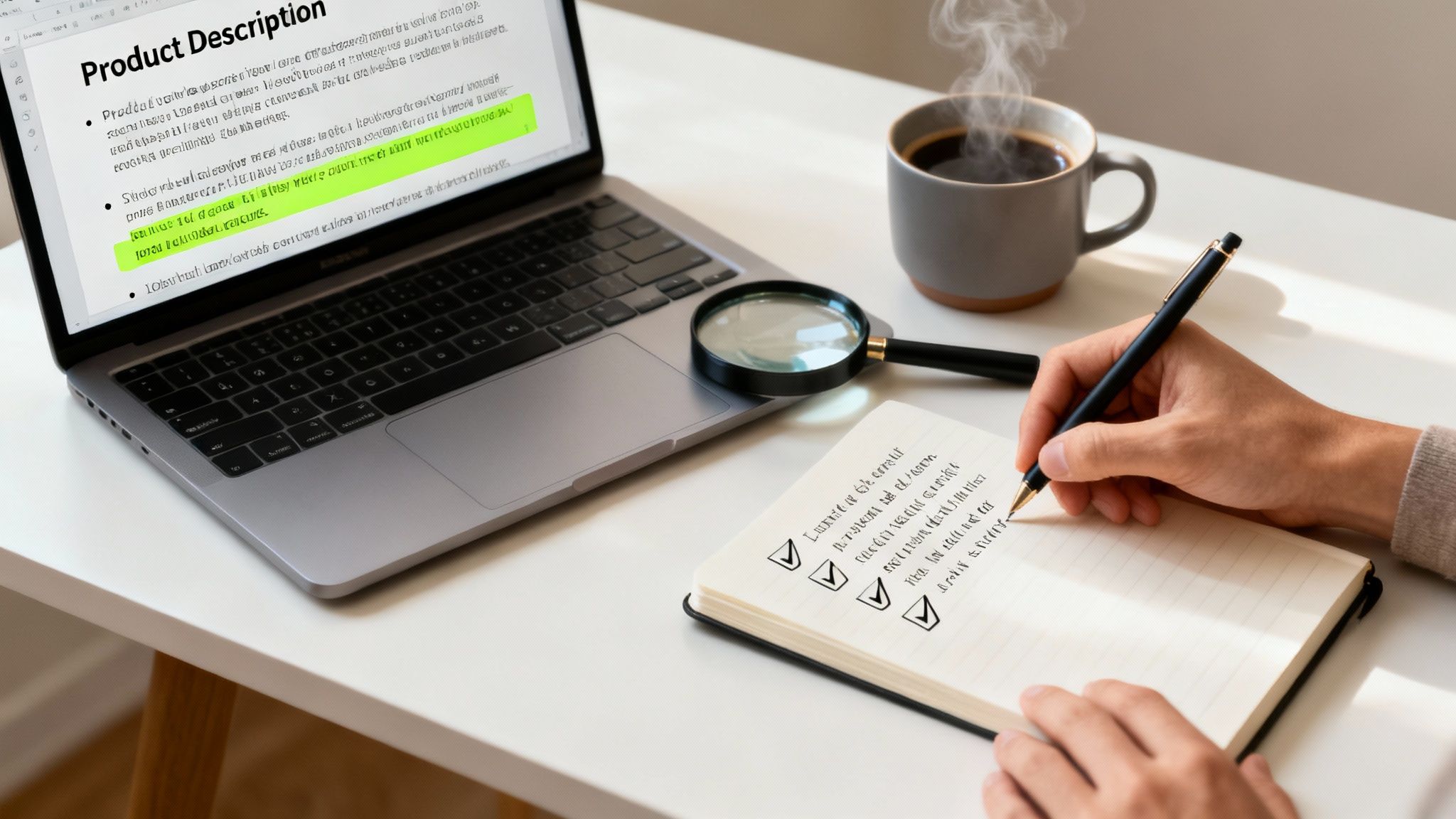
Struggling to get your emails noticed in a crowded inbox? You're not alone. For many digital marketers and content creators, the challenge isn't just sending emails—it's crafting messages that actually get opened, read, and acted upon. A poorly written email can lead to missed opportunities, confused clients, and a lot of wasted effort. This guide cuts through the noise and offers a practical blueprint on how to write perfect emails. We'll provide actionable strategies for everything from crafting irresistible subject lines to structuring your message for maximum impact, ensuring every email you send builds relationships and drives results.
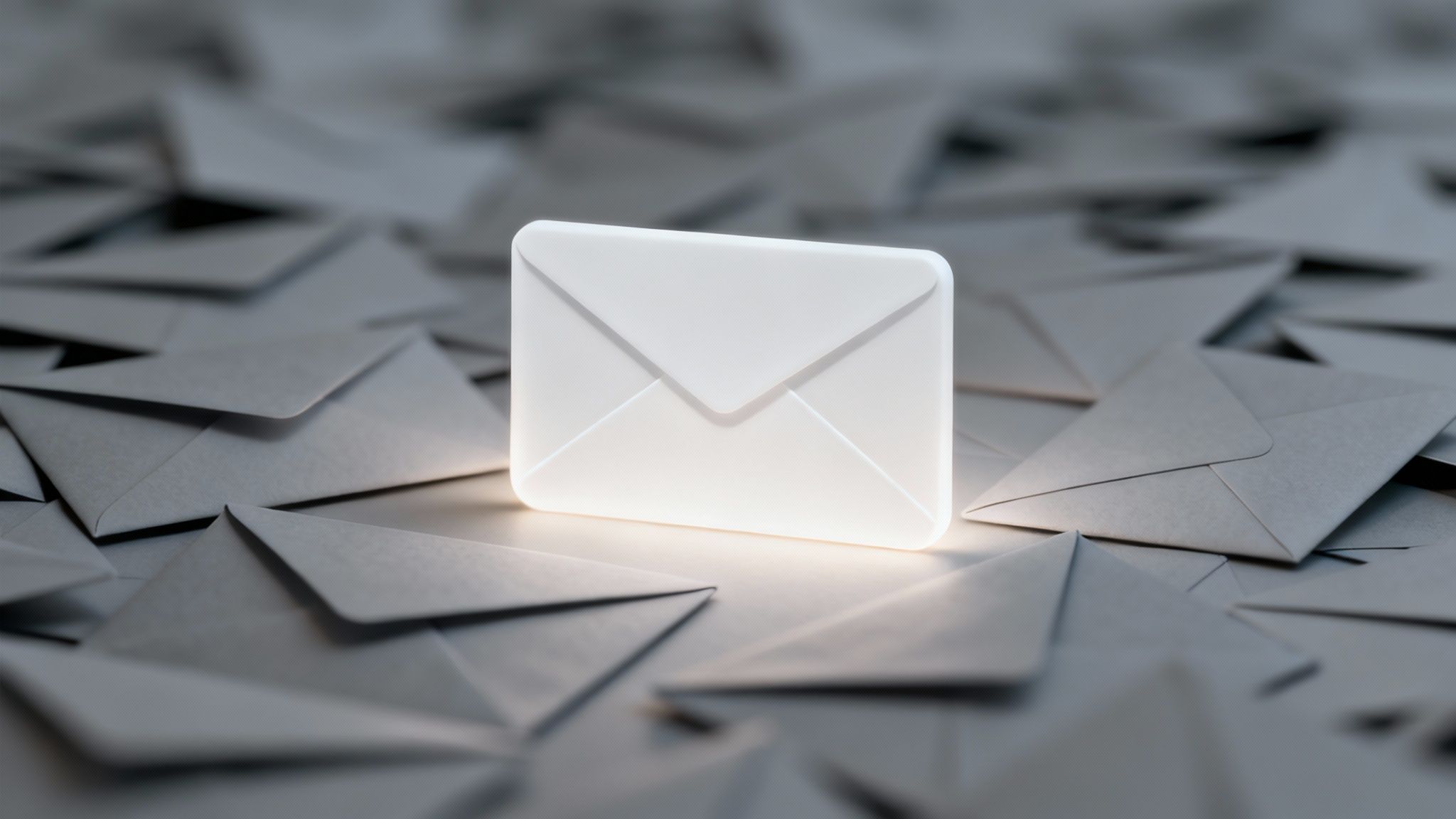
Plan Before You Type: The Blueprint for a Perfect Email
The most effective emails are designed, not just written. Before you type a single word, taking a few moments to plan can be the difference between a message that gets an instant reply and one that gets instantly deleted. For busy marketers or agency owners, jumping straight into the inbox without a clear plan is a recipe for rambling, ineffective communication. Before you even think about that catchy subject line, pause and ask yourself one critical question: What is the single most important thing I want this email to achieve? Whether it's getting a client's approval on a design or aligning your team on a campaign deadline, having a clear objective is your north star. It dictates your tone, content, and the final call to action, turning a generic blast into a targeted, effective message.
Know Your Audience Inside and Out
Once your objective is clear, your focus must shift to the recipient. Who are they, and what do they care about? An email to a long-term colleague will naturally sound different from a formal proposal to a C-suite executive you've never met. Tailoring your message to the reader is essential for making a genuine connection.
Consider these factors from their perspective:
- Their Role and Priorities: A project manager cares about timelines and deliverables, while a CEO focuses on ROI and strategy. Speak their language. For example, when emailing a client about a campaign, focus on performance metrics, not just creative details.
- Your Relationship: Is your connection formal or casual? This determines everything from your greeting ("Hi Jane" vs. "Dear Ms. Smith") to your sign-off.
- Their Existing Knowledge: Avoid over-explaining concepts they already understand, but don't assume they have the full context on a new project. A little empathy goes a long way.
Outline Your Key Points for Conciseness
Before writing, jot down a quick outline. This simple habit is the ultimate defense against the long, unfocused emails that get ignored. A quick outline forces your message to be logical, tight, and easy to scan. For instance, if you're a freelancer asking a client for feedback on a new content draft, your outline could be:
- Purpose: Need your feedback on the new blog post.
- Link: Here’s the direct link to the Google Doc.
- Specifics: Please focus on the intro and the call to action.
- Deadline: Kindly provide your thoughts by EOD Friday.
This structure respects their time and makes it incredibly easy for them to give you exactly what you need. This clarity is crucial in cold email outreach strategies and can be scaled effectively using marketing automation best practices.
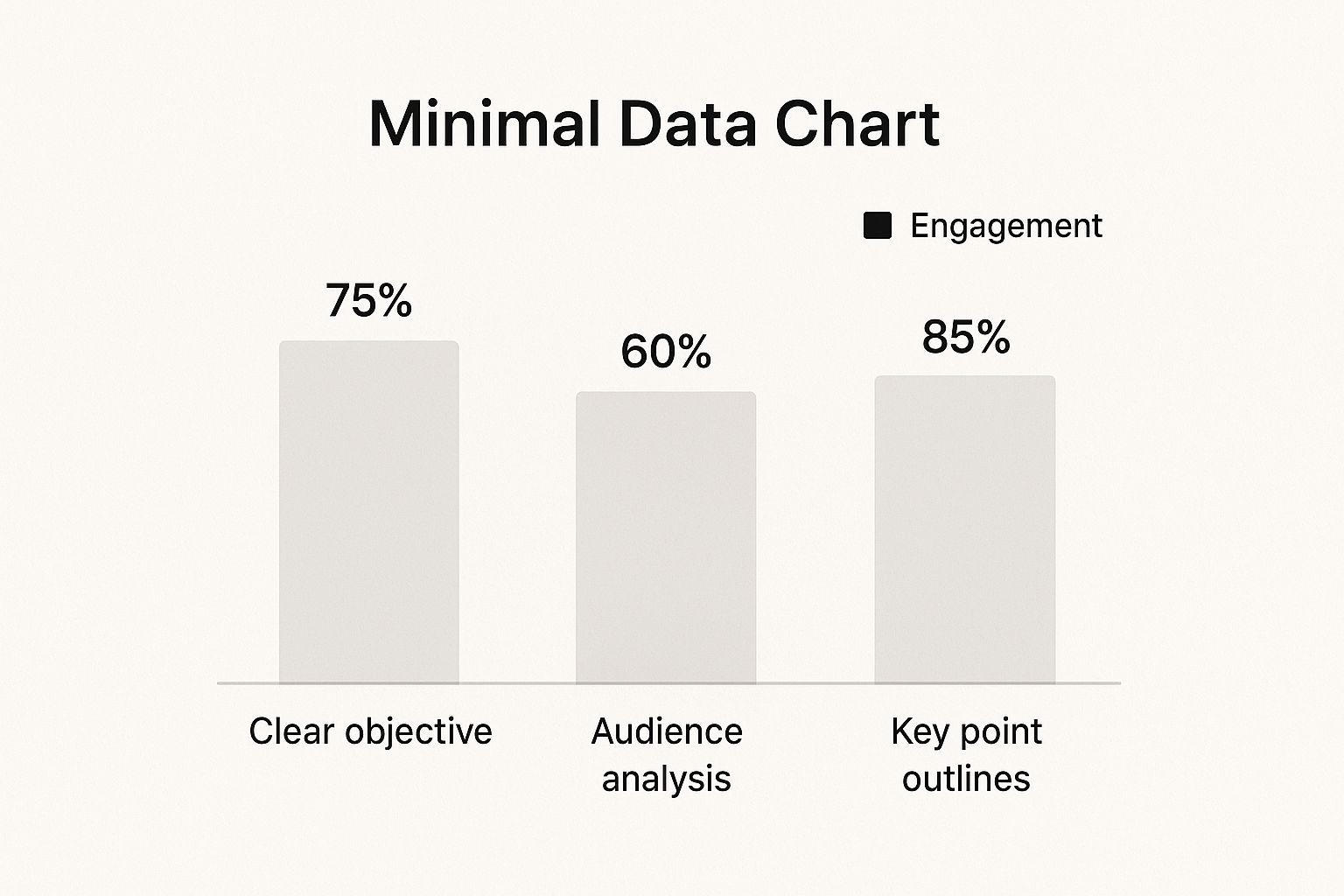
Crafting Subject Lines That Demand to Be Clicked
Your subject line is the gatekeeper of your email. In a crowded inbox, it alone determines whether your message gets opened or ignored. For a busy content creator or marketer, a weak subject line renders even the most brilliantly crafted email invisible. The goal is to create a subject that is clear, compelling, and relevant to the recipient. A generic subject like "Update" or "Checking In" is easily lost. In contrast, "Feedback Needed: Q3 Social Media Campaign Draft" is specific, actionable, and tells the recipient exactly what you need from them. This small change can dramatically improve your open rates and ensure your important messages get the attention they deserve.
The Psychology of an Irresistible Subject Line
What makes someone click? Effective subject lines tap into core psychological triggers. This isn't about manipulation; it's about understanding human motivation to ensure your message stands out. A great subject line will typically do one of the following:
- Spark Curiosity: "A better way to manage your content workflow"
- Convey Urgency: "Final review needed before our 2 PM deadline"
- Offer Clear Value: "3 templates to speed up your content creation"
- Use Personalization: "John, here's that resource I mentioned"
Data backs this up: 47% of email recipients open an email based on the subject line alone. Personalization can boost open rates significantly, and adding a sense of urgency can increase them by up to 22%. To dive deeper, explore these email subject line best practices.
Subject Line Strategies for Marketers and Creators
The right subject line depends on your audience and goal. An internal update for your agency requires a different approach than a promotional email to your creator community.
| Strategy Type | Example | Best For | Impact on Open Rate |
|---|---|---|---|
| Direct & Informative | "Meeting Agenda for Friday, 10 AM" | Internal team communication where clarity is key. | Moderate to High |
| Curiosity-Driven | "A better way to manage your content workflow" | Marketing emails to engage cold leads or subscribers. | High (if done well) |
| Urgency-Focused | "Your offer expires in 24 hours" | Sales promotions and time-sensitive requests. | Very High |
| Personalized | "John, here's that resource I mentioned" | Follow-ups and relationship-building with clients. | Moderate to High |
A common mistake to avoid is misleading clickbait. If you promise something your email doesn't deliver, you erode trust. Always ensure your subject line accurately reflects the content. Aim for under 50 characters so it doesn't get cut off on mobile devices, where more than half of all emails are opened.
👉 Try MediaWorkbench.ai for free – schedule your posts and generate AI content in one place!
Structuring Your Message for Clarity and Action
Getting your email opened is only the first step. The structure of your message determines whether your reader will grasp your point quickly or give up after the first sentence. A dense wall of text is a surefire way to get your email sent straight to the trash. The key is to respect your reader’s time by making your message as clear and scannable as possible. This means leading with your most important information, a principle known as "Bottom Line Up Front" or BLUF. This ensures that even if your recipient only skims the first line, they understand the core purpose of your email.
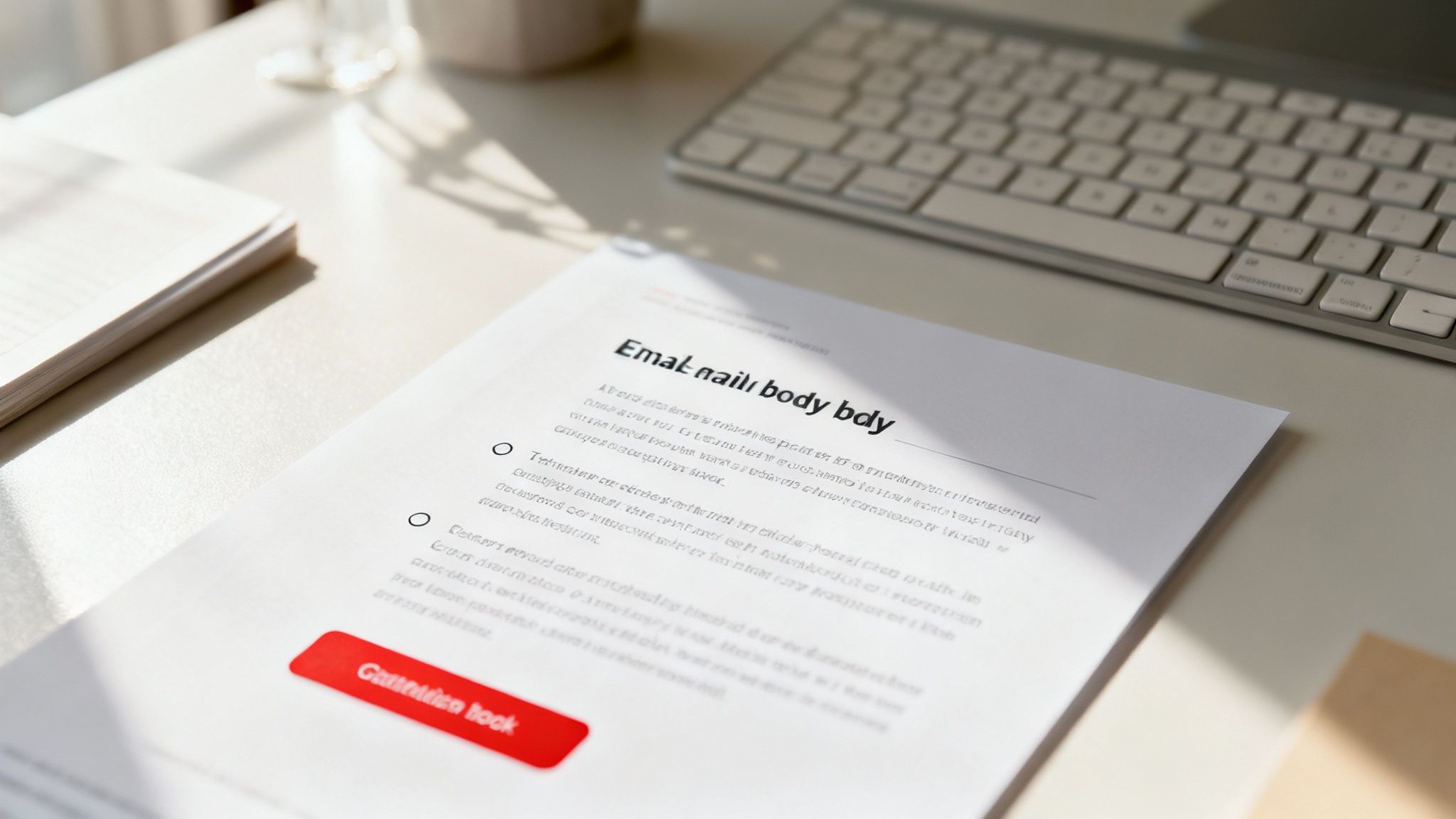
Embrace the BLUF Principle
BLUF stands for Bottom Line Up Front. It’s a simple but powerful concept: start with your main point, request, or conclusion. This approach immediately answers the recipient's unspoken question: "Why should I care?" For example, instead of building up to a request, lead with it: "I need your final approval on the attached proposal by 3 PM today." The rest of the email can then provide the necessary context and details. This structure is incredibly effective for busy professionals who need to quickly triage their inbox and prioritize tasks.
Craft a Concise and Scannable Body
After stating your bottom line, the body of your email should provide supporting details in an easy-to-digest format. No one wants to read long paragraphs on a screen.
Here are a few tips for a clean, readable email body:
- Keep Paragraphs Short: Stick to one idea per paragraph, and aim for 2-3 sentences max. This creates white space and makes the text less intimidating.
- Use Bullet Points or Numbered Lists: When listing action items, questions, or steps, use bullets. This helps organize information and makes it instantly scannable.
- Use Bold Text (Sparingly): Highlight key deadlines, names, or specific actions you need the recipient to take. Use it strategically to draw the eye to the most critical information.
Mastering this structure is a key part of effective communication. For more guidance, check out these essential copywriting tips for beginners.
Mastering Your Tone for Professional Impact
Your email's tone is its personality. It’s the subtle element that builds trust, prevents miscommunication, and ultimately helps you achieve your goals. For marketers and freelancers, getting the tone right can be the difference between building a strong client relationship and creating an accidental conflict. Because written communication lacks the context of body language and vocal inflection, a simple request can easily be misinterpreted as a blunt demand. That's why mastering your tone is a non-negotiable part of learning how to write perfect emails. A slight adjustment in your phrasing can turn a potentially tense exchange into a productive and positive conversation.
Adapting Your Voice for Different Audiences
There is no one-size-fits-all tone. The right approach depends entirely on your audience and the context of your message.
- Formal Tone: Use for initial contact with a new client, communication with senior leadership, or formal proposals. This means using proper grammar, complete sentences, and avoiding slang. Example: "Dear Mr. Johnson, I am writing to follow up on our recent discussion regarding the Q4 marketing strategy."
- Informal Tone: Ideal for communicating with colleagues you know well or for quick, routine updates. This is where contractions and a more conversational style are appropriate. Example: "Hey Mark, just wanted to let you know the client loved the latest mockups. Great work!"
The key is adaptability. You might start a relationship with a formal tone and gradually shift to a more casual style as you build rapport. This shows you're attentive and helps foster stronger professional connections.
The Power of AI in Perfecting Your Tone
Nailing the right tone every time can be challenging, but AI-powered writing assistants are a game-changer. These tools can analyze your email's sentiment as you type, flagging sentences that might come across as passive-aggressive or suggesting alternative phrasing to sound more confident or friendly. This is especially useful for high-stakes emails where there is no room for misinterpretation. For instance, AI can suggest hyper-relevant messaging based on recipient data, a tactic now widely used in email marketing statistics and strategies. This isn't about letting a robot write for you; it's about having a smart partner to ensure your message lands exactly as intended.
The Final Polish: Your Pre-Send Checklist
Hitting "send" and immediately noticing a typo or a broken link is a feeling every professional dreads. That final pre-send check is what separates an amateur from an expert. A single error can undermine your credibility and undo all the hard work you put into crafting the perfect message. Taking just a few extra moments to proofread and review ensures you make the best possible impression every single time. This step is particularly critical for marketers and agencies, where attention to detail is a direct reflection of the quality of their work.
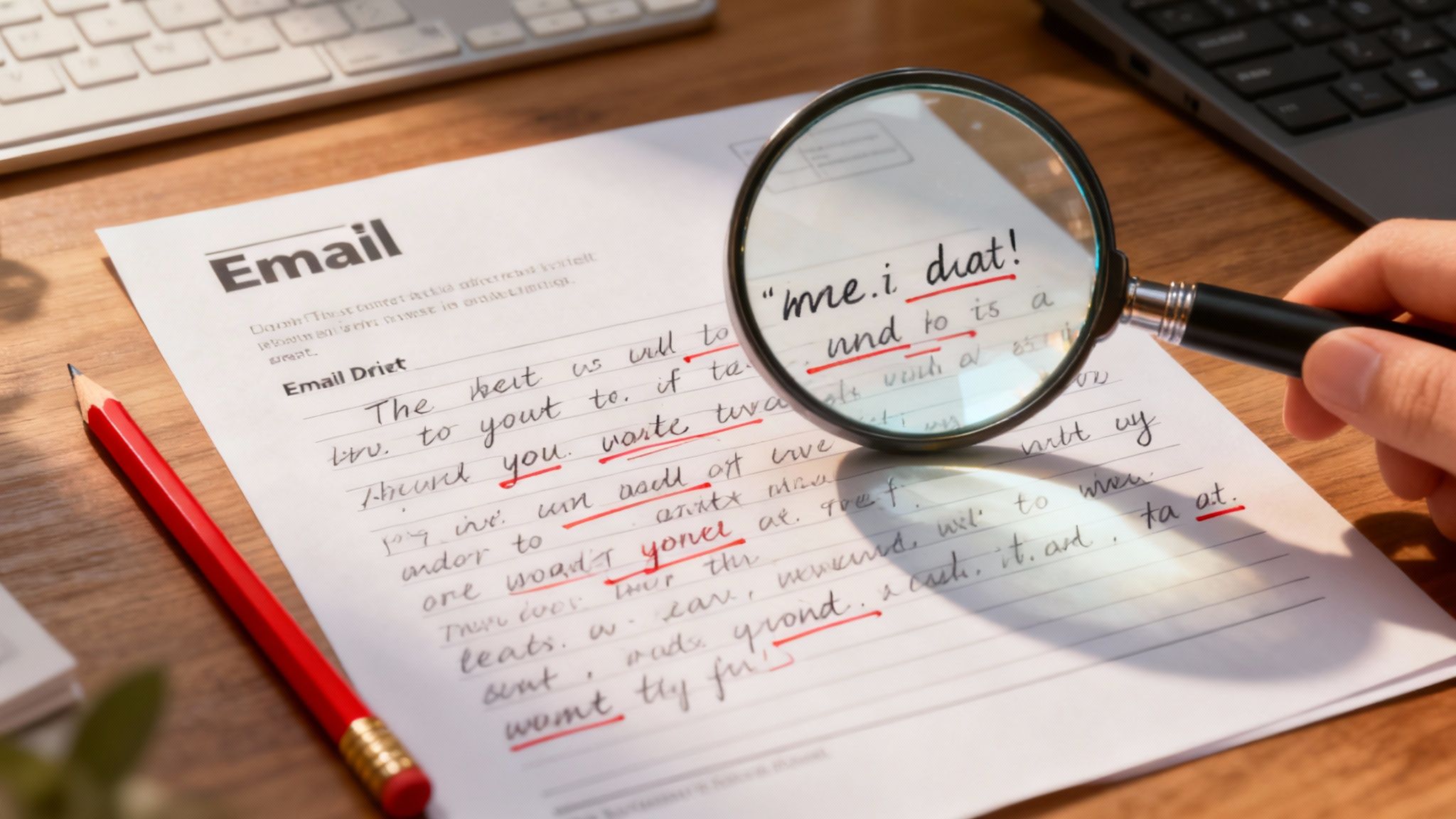
Your Comprehensive Proofreading Checklist
Don't just rely on your spell-checker. A thorough review requires looking at your email from multiple angles to catch the subtle errors that automated tools miss.
Before sending an important email, run it through this checklist:
- Read It Aloud: This is the best way to catch awkward phrasing and clunky sentences. If it doesn't sound natural when you say it, it won't read well.
- Verify All Names and Titles: Double-check the spelling of the recipient's name and ensure their job title is correct. It's a small detail that shows respect.
- Check Every Link: Click every hyperlink to ensure it goes to the correct, live page. A broken link is a dead end for your reader.
- Confirm Attachments: We've all sent the dreaded "Sorry, forgot the attachment" follow-up. Glance for the paperclip icon before you hit send.
Final Sanity Checks for Maximum Impact
You’re almost ready. The last step is a quick scan focused on the recipient's experience. Put yourself in their shoes one last time to ensure the email is set up for success.
Ask yourself these three questions:
- Is the ask clear? If the recipient only had 10 seconds, would they know exactly what you need from them?
- Is the tone appropriate? Does my message sound helpful and collaborative, or am I coming across as demanding?
- Is this email necessary? Could this be better handled with a quick message or a call?
This final filter ensures you’re communicating with purpose and respect. Pairing this meticulous process with the best AI tools for content creation can speed up the drafting stage, leaving you more time for this critical final polish.
Conclusion: From Good Emails to Great Results
Mastering how to write perfect emails isn't about following a rigid set of rules; it's about communicating with intention, clarity, and respect for your reader's time. By planning your message before you write, crafting a compelling subject line, structuring your content for scannability, and meticulously polishing your final draft, you can transform your email from just another notification into a powerful tool for building relationships and driving action. For busy creators, marketers, and freelancers, these principles are the foundation of effective professional communication. They ensure your messages cut through the noise, get the attention they deserve, and ultimately deliver the results you need.
Ready to supercharge your content workflow and craft flawless emails faster? Try MediaWorkbench.ai for free and discover how our AI-powered tools can help you generate, refine, and schedule your content all in one place.
